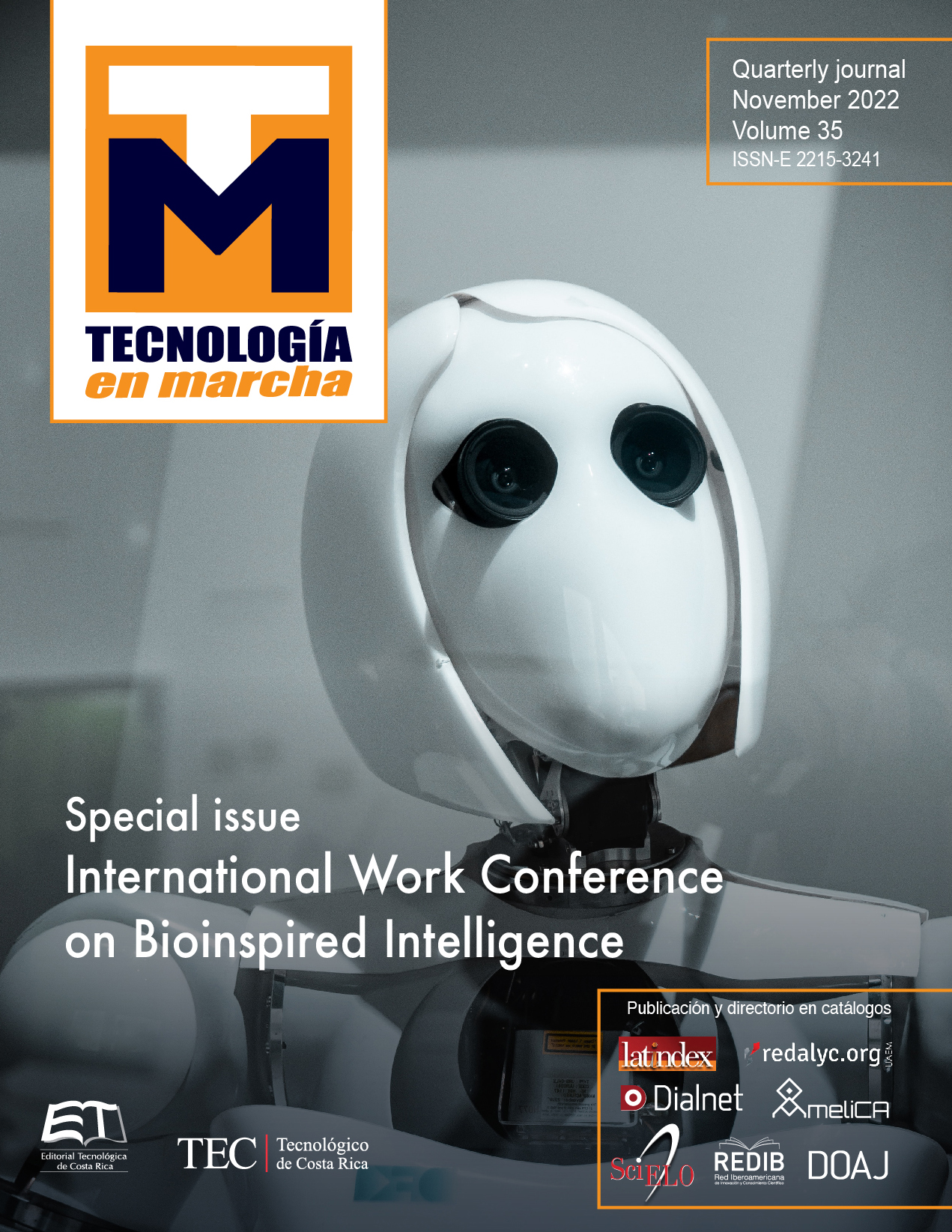Automated adenocarcinoma lung cancer tissue images segmentation based on clustering
Main Article Content
Abstract
Cancer is one of the main dead causes worldwide. It is re- sponsible for an approximate of 1 out of 6 deaths globally and lung cancer is along breast cancer, the most common types of cancer in the population, which confirms the importance of studies associated with it. This work presents an approach toward lung cancer histological tissue images segmentation based on colour. The proposed method for the segmentation is K-means clustering, providing promising results that may become as an assistance for pathologists, as it can help them reduce the time consumed reviewing the slides and giving a more objective perspective in order to provide a diagnose and specific treatment.
Article Details

This work is licensed under a Creative Commons Attribution-NonCommercial-NoDerivatives 4.0 International License.
Los autores conservan los derechos de autor y ceden a la revista el derecho de la primera publicación y pueda editarlo, reproducirlo, distribuirlo, exhibirlo y comunicarlo en el país y en el extranjero mediante medios impresos y electrónicos. Asimismo, asumen el compromiso sobre cualquier litigio o reclamación relacionada con derechos de propiedad intelectual, exonerando de responsabilidad a la Editorial Tecnológica de Costa Rica. Además, se establece que los autores pueden realizar otros acuerdos contractuales independientes y adicionales para la distribución no exclusiva de la versión del artículo publicado en esta revista (p. ej., incluirlo en un repositorio institucional o publicarlo en un libro) siempre que indiquen claramente que el trabajo se publicó por primera vez en esta revista.
References
World Health Organization. Cancer key facts. https://www.who.int/news-room/ fact-sheets/detail/cancer, Sep 2018.
American Cancer Society. What is lung cancer? https://www.cancer.org/cancer/ lung-cancer/about/what-is. html, 2019.
The Royal College of Pathologists. What is a biopsy? https://www.rcpath.org/ discover-pathology/news/factsheets/what-is-a-biopsy.html, 2018.
Brian Nation and Guy Orchard. Histopathology. Oxford University Press, 2 edition, 2012.
P. Quinde and F. Siles. Diseño, implementación y validación un algoritmo de ras- treo de células cancerígenas basado en hmm’s a partir de imágenes de microscopía de campo claro. Universidad de Costa Rica, 2018.
A. Mora and F. Siles. Cell phenotype classification using m-phase features in live-cell bright field time-lapse microscopy. Universidad de Costa Rica, 2018.
B. Peng, L. Chen, M. Shang, and J. Xu. Fully convolutional neural networks for tissue histopathology image classification and segmentation. In 2018 25th IEEE International Conference on Image Processing (ICIP), October 2018.
Y. Xu, Z. Jia, and L. Wang. Large scale tissue histopathology image classification, segmentation, and visualization via deep convolutional activation features. BMC Bioinformatics, 2017.
M. Saric, M. Russo, M. Stella, and M. Sikora. CNN-based method for lung cancer detection in whole slide histopathology images. In 2019 4th International Conference on Smart and Sustainable Technologies (SpliTech), pages 1–4, 2019.
W.D. Travis, E. Brambilla, A.P. Burke, A. Marx, and A. G Nicholson. Who classification of tumours of the lung, pleura, thymus and heart, 2015.
National Cancer Institute. Clinical proteomic tumor analysis consortium lung adenocarcinoma. https://wiki.
cancerimagingarchive.net/display/Public/ CPTAC-LUAD, 2018.
OpenSlide. Aperio format. https://openslide.org/formats/aperio/.
G. Bradski. The OpenCV Library. Dr. Dobb’s Journal of Software Tools, 2000.
G. Cooper and C. McGillen. Probabilistic Methods of Signal and System Analysis. Oxford University Press, NJ, USA, 3rd edition, 1998.

